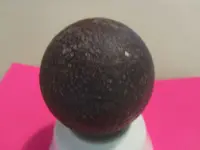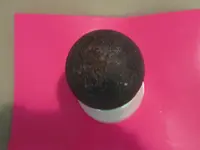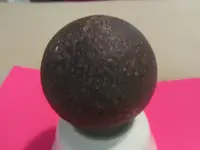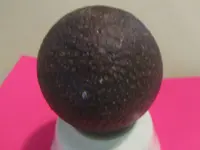Take a picture of it next to a tape measure, if it weighs about 3 pounds than it is likely a solid shot 3-pounder, but without accurate measure it's hard to say. 3-pounders were very common back in the Revolutionary War and War of 1812, not so common afterwards (they would not have been used in the Civil War in significant numbers, if at all). It clearly has very heavy pitting from being outside in wet and corrosive soils for a long time, consistent with a cannonball that has been buried for more than 200 years. I have found many metal balls in the field and in all those years only one turned out to be a real cannonball, all the rest were other things such as shot-put balls, gate weight balls, 'mill balls', cement mixer-cleaning balls, large ball bearings, etc. The best way to tell a cannonball from these other things is a cannon ball is very round, it will have a seem along the middle and a sprue mark on top. The seem and sprue will be very well filed down by the manufacturer and will not protrude in anyway. The ball will also have to be of a specific diameter and weight that matches a known size of cannon. If the size and weight doesn't match to a cannon than it cannot be a cannonball.










